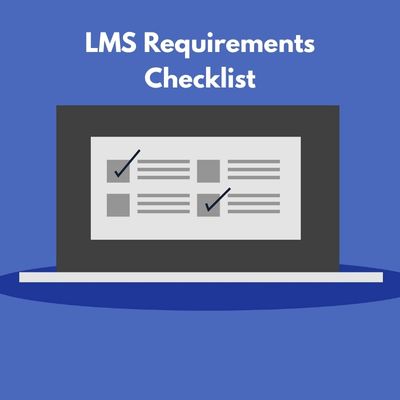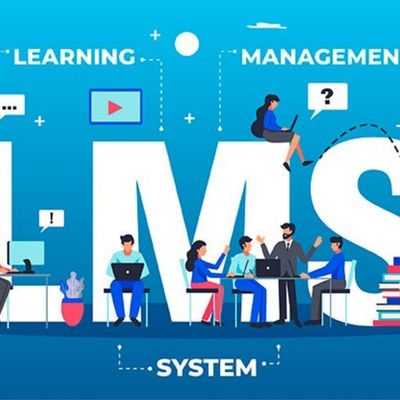So you are an HR leader, a school administrator, or a business owner who needs to utilise LMS? This guide will help you understand the LMS requirements checklist- the toolkit you must have to select the right platform.
Why Keep an LMS Requirements Checklist?
Think about purchasing a car without ensuring that it fits your family, your parking area, or your budget. It is like that when you have to choose an LMS without a checklist. With such a detailed LMS requirements checklist, there is no risk of forgetting essential features, compliance requirements, or technical specifications. It is the plan to find a solution that will bring joy to learners, power to administrators and help your firm to excel.
What are LMS Requirements?
LMS requirements are functions and capabilities that a learning management system must present to achieve your objectives, including technical criteria. These needs include user management, course creation, as well as security, integrations and reporting. The correct combination will also depend on the size of your organisation, the industry, and its learning objectives.
The Ultimate List of Learning Management System Requirements
To help you make a smart and assured decision, let us split the must-haves and the nice-to-haves. And here is your LMS requirements checklist:
1. Management of Users and Courses
- User Roles: Is it possible to have user roles such as an administrator, instructor, and learner with varying permissions?
- Self-Registration: Does the site support simple registration of users, both individually and through bulk uploads?
- Group Management: Are you able to make groups or cohorts to target learning?
- Course Classification: Can you easily classify courses as per topic, department or skill level?
- Automation: Do you have automated reminders and course enrolments to save time?
- Learning Pathways: Does the LMS allow the creation of different learning paths for various users?
2. Delivering Content
- Blended Learning: It helps enhance online and face-to-face (real-life) learning.
- Microlearning: Are you able to provide bite-sized lessons that provide fast learning?
- Self-Paced / Instructor-Led: Do you have the ability to offer courses which are self-paced, scheduled, or a combination of both?
- Mobile Learning: Can learning be done with a mobile app or responsive design?
- Video/ Webinar Integration: Does LMS have an integration with webinar tools, and have the ability to support multimedia content?
3. Creating Content
- Tools: Optional course-building, quiz and other interactive content tools.
- Import/Export of Content: The ability to import information or data and export for backup.
- Version Control: The possibility to edit content while retaining earlier versions.
- xAPI/SCORM Compliant: SCORM compliance or xAPI compliance is the ability to use content that meets eLearning standards in terms of content interoperability.
4. Tracking and Reporting
- Progress monitoring: Progress monitoring in real-time with dashboards to track student progress, completed courses, and scores.
- Reports: Are you able to create reports according to your requirements- by users, group, course or date?
- Regulatory Reporting: Compliance and audit trail features, in particular, in regulated industries.
- Skills Gap Analysis: Resources to determine how learners can be improved.
5. Assessing and Reviewing
- Exams and Quizzes: Multiple question types, clock-based, and random questions.
- Submissions: Capability to set tasks and to gather submissions, as well as feedback.
- Polls: Surveys and polls are used to collect the feedback of the learners and measure satisfaction.
- Certificates: Automatic distribution of certificates of completion or digital status.
6. High-Grade Safety
- User Authentication: You can use multi-factor authentication as well as a one-time sign-in (SSO) feature.
- Data encryption: Encrypt data at rest and in transit.
- Managing Access: Limit the user access to content according to the roles or groups.
- Compliance Norms: They comply with GDPR, FERPA, HIPAA, and among other laws of the country you are working in or any other laws applicable to your industry.
7. Integration Abilities
- Access to API: Open APIs to integrate with Crm, HR, and business systems.
- Third Party Integrations: Ability to be used with programs such as Salesforce, Zoom, Slack, or payment gateways.
- Just One Sign-On: A smooth process of logging in to the digital environment of your organisation.
8. Personalisation
- Tailored Branding: The capacity to include logo, colours and themes to have a uniform learner experience.
- Creative Layouts: Possibility to work with the menus, navigation, dashboard, etc.
9. Extending Support with Training
- Hiring support: Proper user/admin set up and training under guidance.
- Strong base of Knowledge: Availability of tutorials, a frequently asked questions section, as well as community forums.
- Customer Support: Quick helpdesk support through chat, email or phone, at any time of the day.
How to Utilise the LMS Requirements Checklist
Determine the needs of stakeholders
Get feedback of all- instructors, compliance teams, IT, HR, and learners. All of them will require different requirements of LMS.
Put must-haves ahead of nice-to-haves
All features are not crucial. With the help of your requirements checklist in your LMS, distinguish between what you really need and what can be considered optional. Your must-haves have to match your organizational objectives and compliance requirements whereas nice-to-haves can be implemented based on available budget and time.
Conduct research and list out vendors
Compare platforms according to your list. Seek third party opinions, demand demonstrations and have the vendor demonstrate how their solution would satisfy your learning management system requirements.
Assess and draw conclusion
Test support, usability, and performance using free trials or pilot programs. Understand real users and involve them to obtain feedbacks before making a final decision.
Take the step ahead to execute
After selecting your LMS, you should develop the implementation plan that should include data migration, train users, and launch dates. It is also important to keep record of your LMS requirements that can be used in future and even upgrading.
Basic Mistakes to Steer Clear Of
- An LMS with lots of features does not help when it confuses the learners and admins.
- Ensuring that your LMS would operate within your tech stack would be excellent.
- Data breaches are most expensive, and you should make sure at least there are decent security measures.
- Go with a scalable solution that will not put you at a disadvantage when your needs change.
The decision to select a learning management system is not a race. Remember that your LMS requirements list is not only a to-do list, but also a guide that helps you avoid a congested marketplace. When you concentrate on your special requirements, engage the stakeholders, and choose functions that support learning outcomes, you will not only find an LMS but a platform that will help you grow together.
Therefore, prior to penning down the dotted line, you reconsider your LMS requirements, reconfirm your LMS system requirements, and ensure your LMS platform fully fits your requirements list. It will be of benefit to your learners (and ultimately your organisation, as well).
Let us learn not to learn more, but rather differently. Good luck in LMS hunting!



